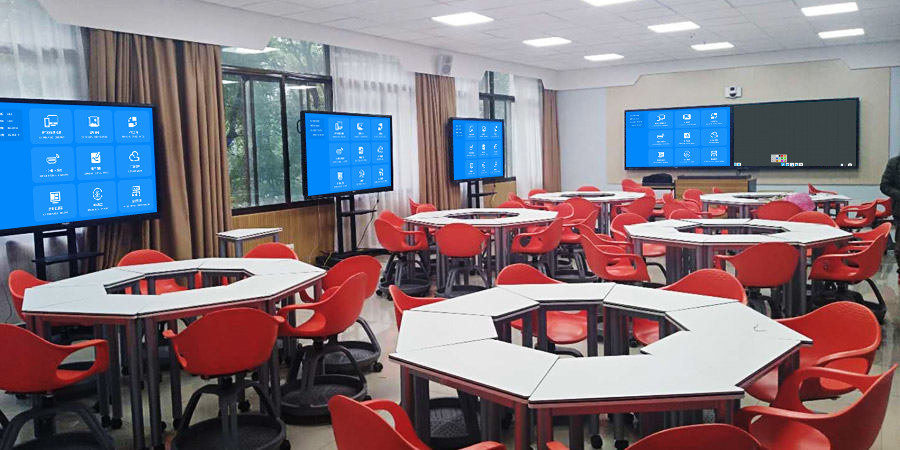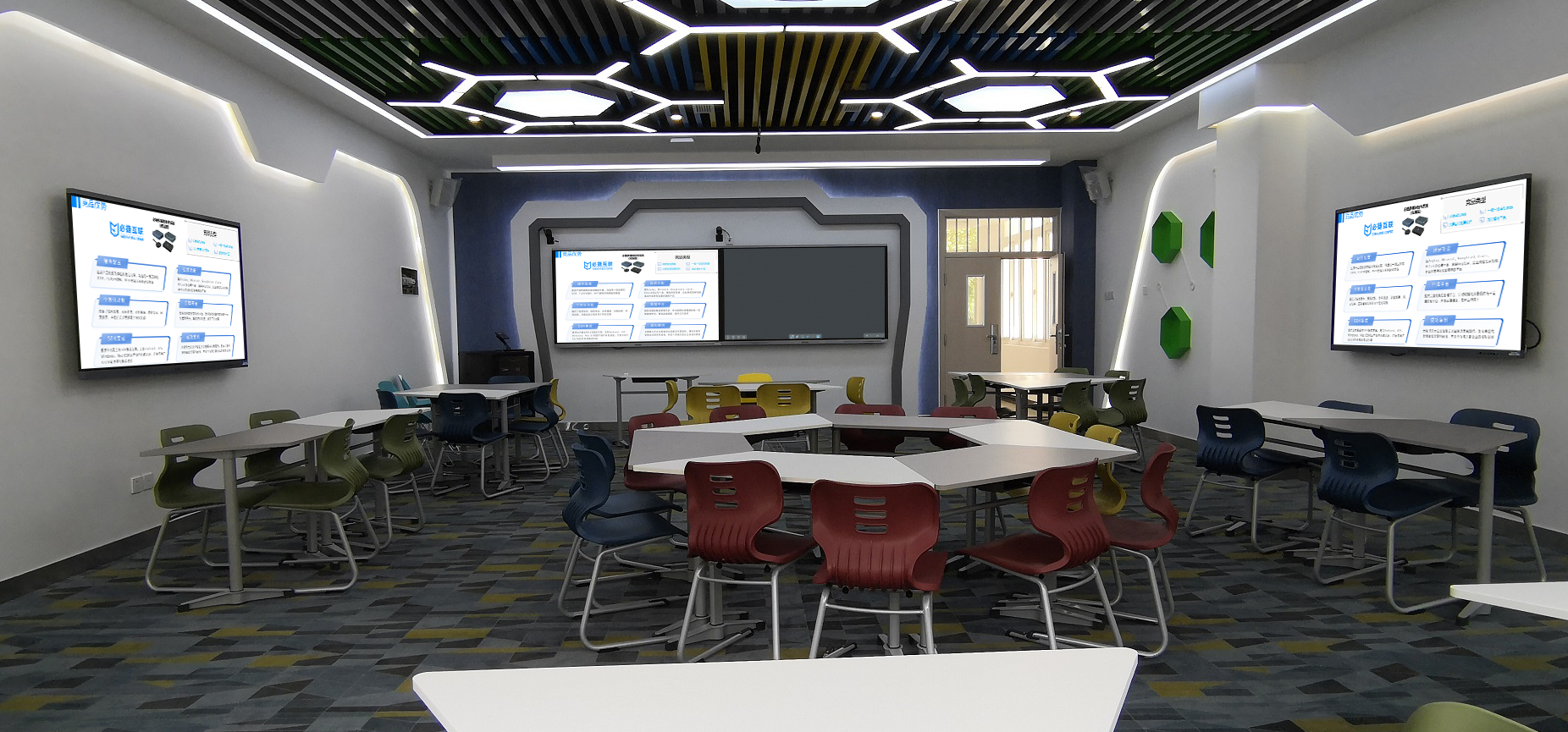Smart Classrooms: Phone Screen Mirroring Makes Teaching More Dynamic
Want your smart classroom to break free from “device fragmentation and insufficient interaction”? This screen mirroring device makes it happen with ease! It’s compatible with all teacher and student devices, supports instant lesson plan transfers, quick result mirroring, and real-time annotations. It covers scenarios like daily teaching, group exploration, and practical demonstrations, transforming smart teaching from “one-way output” to “two-way co-creation.”
1-Minute to Activate Smart Teaching, Zero Threshold for Teachers and Students
The operation is so simple that even new teachers can master it instantly:
- Quick Device Connection and Networking: Plug the screen mirroring receiver into the smart board/group’s secondary screen and power it on. It automatically matches the classroom network, and the large screen displays a dedicated identifier (e.g., “9th Grade Class 2 Smart Screen”). The teacher’s computer plugs in the transmitter, and student tablets/phones connect to the campus Wi-Fi to join.
- One-Tap to Start Interaction: The teacher clicks “Teaching Mode,” and the lesson plan automatically synchronizes to the smart board. Students use the tablet’s “Cast Results” function to push their assignments and ideas to the group screen or main screen in 1 second. No software installation is required throughout the entire process; simply follow the instructions.
Core Advantages: Meeting the Needs of Smart Classrooms
Full Device Collaboration, No Barriers to Teaching
- It covers Windows computers, Android tablets, and iOS devices, with full compatibility for brands like Lenovo, Huawei, and Apple. The compatibility rate for old teaching devices and new terminals exceeds 98%, so you’re not limited by device model.
- It supports “multi-screen collaboration“: the smart board displays core lesson plans, group secondary screens present exploration tasks, and student tablets simultaneously receive materials. Devices transform from “independent use” to “collaborative effort,” making teaching more comprehensive.
Real-time Content Flow, More In-Depth Interaction
- Precisely Push Lesson Plan Sections: The teacher divides the lesson plan into “knowledge point explanations,” “in-class exercises,” and “extended materials.” These are pushed in sections to the smart board using the screen mirroring device, preventing students from getting ahead. When pushing experimental videos, it supports slow motion and freezing frames, making key steps clearly visible.
- Instant Result Sharing: After students complete mind maps or problem-solving steps on their tablets, they click “Cast to Main Screen,” and the entire class can view it in real-time. The teacher annotates and comments on the smart board, and feedback efficiency is 10 times faster than collecting homework. Group exploration results are cast to secondary screens, making cross-group peer feedback more intuitive.
High-Definition and Stable Transmission, Uninterrupted Teaching
- 1080p Full HD mirroring ensures sharp details when casting CAD drawings and 3D models, allowing even students in the back to clearly see annotations. Dual-band transmission provides strong anti-interference. When multiple devices mirror simultaneously, latency is less than 15ms, with no lagging page-flips or annotations. Public classes and live streams won’t experience interruptions.
- It integrates with smart classroom systems, automatically adapting mirrored content to the smart board’s resolution, eliminating the need for manual adjustment of the screen ratio. Teachers can focus on teaching without being distracted by technical operations.

Applicable to All Scenarios: Empowering Smart Teaching
Daily Teaching: More Dynamic Knowledge Delivery
- In a math class, the teacher uses a computer to cast a geometric model to the smart board, and students use tablets to drag the model to verify theorems, with operational results displayed in real-time. In a Chinese class, text audio is pushed to the classroom speakers, combined with key words and sentences annotated on the smart board, enhancing comprehension through audio-visual integration.
- In an English class, students use tablets to record speaking assignments. After mirroring, the whole class listens and gives feedback. The teacher annotates pronunciation issues on the smart board, providing targeted guidance, making speaking training more efficient.
Group Exploration: More Proactive Collaboration
- In a science class exploring “circuit connections,” each group takes photos of their experiment process with tablets and casts them to their group’s secondary screen for real-time discussion. When a problem is found, it’s pushed to the main screen with one tap for the entire class to analyze the cause of the failure. The teacher demonstrates the correct connection method on the smart board, significantly increasing the depth of exploration.
- In a Chinese-themed exploration class, groups use tablets to organize materials and create presentation PPTs. After peer review and optimization on the secondary screen, they push to the main screen. Students transform from “passive listeners” to “active sharers,” boosting classroom participation by 60%.
Practical Demonstrations: More Precise Guidance
- In auto repair and electrical practical classes, the teacher uses a computer to cast device disassembly videos to the smart board, supporting local zoom to explain internal structures. When students are doing hands-on work, they take photos of operational details and upload them. The teacher annotates error points on the smart board without checking each workstation individually, boosting training efficiency by 40%.
- In an art class, students draw on tablets and mirror their work to the smart board. The teacher provides real-time annotations for color matching and composition optimization, making professional guidance more precise and accelerating student skill improvement.
Practical Details: Peace of Mind for Smart Classrooms
- Permission Control: Only authorized teachers and students from the current class can mirror. It supports setting a screen mirroring password to prevent irrelevant content from interfering. It links with the campus management system to collect mirroring frequency and interaction data, assisting with teaching evaluation.
- Portable and Easy to Maintain: The screen mirroring device is palm-sized, weighing less than 40g, so teachers can carry it for outdoor research. Schools can centrally configure devices and update firmware through a backend platform, leading to low batch maintenance costs.
- Durable and Stable: The casing is wear-resistant and drop-proof, supporting 7×24-hour continuous use to meet the high-intensity teaching demands of smart classrooms.
By using this screen mirroring device to create smart classrooms, teacher-student interaction will be smoother, knowledge delivery will be more dynamic, and the vitality of smart teaching will truly be activated, helping to improve classroom efficiency and teaching quality.